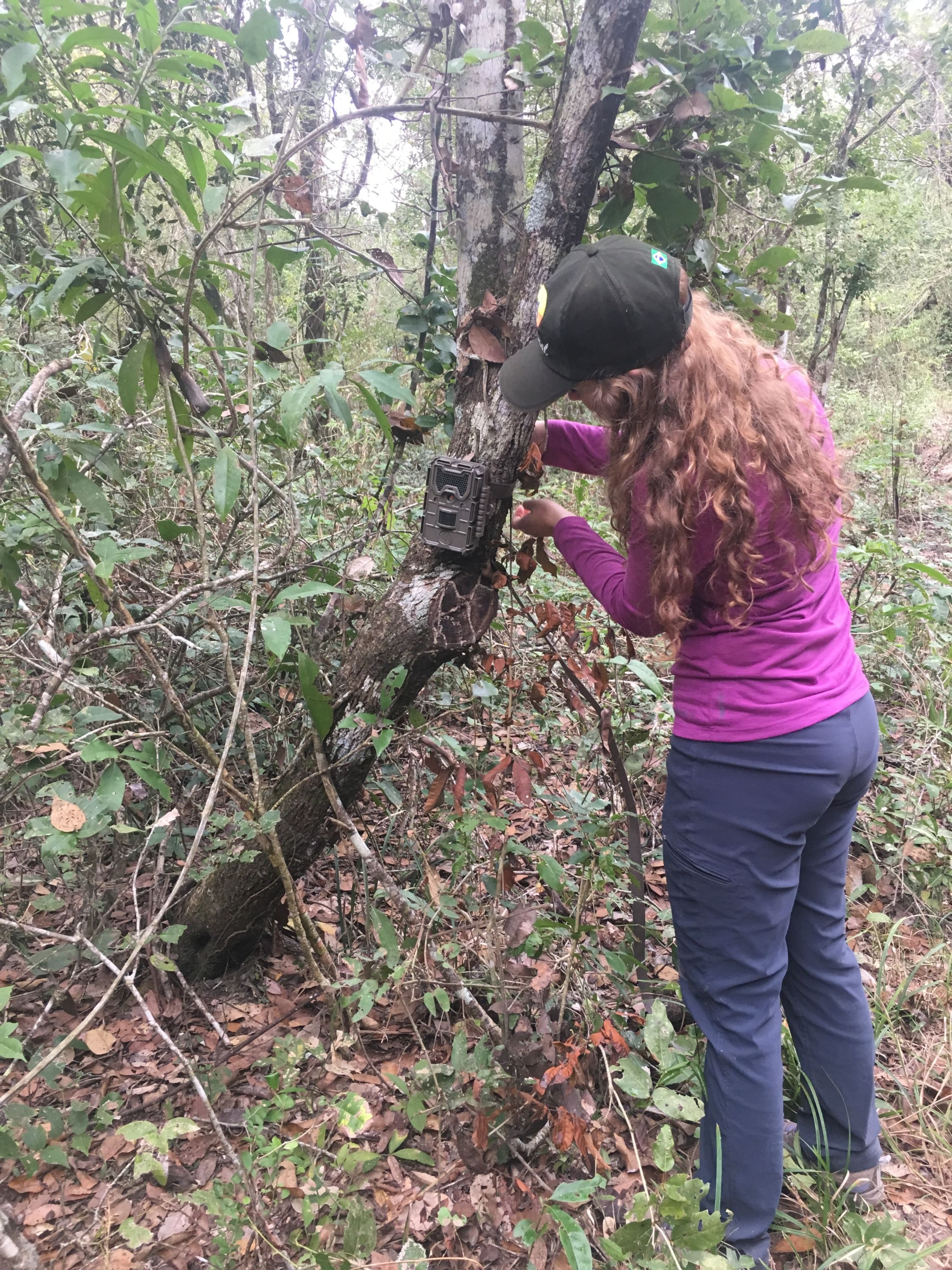Lauren Caramagno: Jaguars, Camera Traps, and Grit
My field research journey to Brazil all started when I met my IBIO 355: Ecology TA, Ethan Shirley, in fall 2017. I was immediately hooked when he started telling me about the biology research he did in Brazil.
Background
Ethan helped MSU undergraduate Chase Smitterberg and myself write up grant proposals for our project to be conducted in the Pantanal region of Brazil. The main goal of our project was to capture wildlife on camera traps and use this data to define a sustainability plan. The information will be used by biologists and shared with local communities through outreach and the development of a citizen science portal.
I was extremely lucky enough to receive the Dr. Marvin Hensley Endowed Scholarship Fund in Zoology from the Department of Integrative Biology at Michigan State to fund my trip. The purpose of this award is to provide financial support for students pursuing an education in vertebrate zoology with an emphasis on field study. Amazon quickly received an order for camera traps, a weather station, and lots of bug spray!
The Project In Action
The four-week journey began on June 3, 2018 when we arrived in Cuiabá, Brazil. We
immediately headed out to the Pantanal to start our project. The long drive was on
a dirt road that included a ton of wildlife, a few questionably safe bridges, and
listening to Ethan tell a lot of bad jokes. Within the first few hours, I saw caiman,
capybara, and more species of exotic birds than I could ever count. The region was
absolutely breathtaking. 
We stayed at the Jaguar Ecological Reserve in the Pantanal, which was a tourist resort and research station for us. Edwardo, the owner of the Reserve, and the people who lived in the Pantanal were very welcoming and willing to help us with our project. They helped guide us to strategic locations to place our camera traps and set everything up.
My favorite part about the Pantanal besides all the amazing wildlife was the feeling of never quite being inside a building. The windows were never panes of glass but mesh screens so we could constantly hear the chattering of birds 24/7. This also allowed us to share our room with many bugs and even a few bats invaded our room.
Next, on our itinerary was to head to a city called Vila Bela which is next to the Amazon Rainforest. We stayed here for a few days. We took a boat ride on the Guaporé River to seek adorable river dolphins and hiked five-hours through the Amazon. During the hike, we were fortunate enough to spot spider monkeys, lots more bugs, exotic birds, and went swimming in a huge waterfall of swirling rushing currents. We headed back to Cangas which is a city right outside of the Pantanal. We were able to go into the schools to help teach English to the children. University of Michigan students taught the kids music as a part of their project as well.
We worked on creating a lesson plan about the ecology of the Pantanal from our experiences in the school systems. Week two began heading back out to the Jaguar Ecological Reserve to check our camera traps. We gathered the data, made adjustments, and relocated a few cameras.
Then we headed out to Porto Jofre a small community about an hour drive further into the Pantanal. We stayed here for two nights working on our data and teaching English in the small school there.
Our journey continued with a five-hour boat ride to Amolar. Here we met people living in small communities with little access to electricity and major cities. They used solar energy to power two communal refrigerators, and one light in each of their homes. We hiked in the Pantanal Matogrossense National Park to find the mythical rock carvings. Unfortunately, they proved to be a myth to us because we never discovered them. During this leg of the journey, we had our first jaguar sighting on a river bank which was extremely exciting. I was fortunate enough to see six jaguars throughout my entire trip. And even watch one stealthily hunt a caiman.
Our final week in the Pantanal began with a check of our camera traps and setting up checklists of animals in the Pantanal for tourists to fill out when they visit. A database was created for the checklists to be entered and we finished our ecology lesson plan and field guide for the school children to learn about wildlife and conservation in the Pantanal. We headed back into the city for a few days to finalize our project.
Finally, our group drove back down the long dirt road to the tourist lodge for the last time and spent our final few days practicing using our checklists made for future tourists. We enjoyed multiple boat trips on the Cuiabá River, horseback riding adventures, and spotlight tours at night. I saw multiple jaguars, kingfishers, macaws, parrots, and monkeys. The entire experience was truly amazing and I look forward to returning to the Pantanal to hopefully teach the lesson plan we created and do further research in this area.
What's Next
We have developed a new student club on campus called the Pantanal Partnership. The goal of the organization is to develop additional research projects in Pantanal and learn more about Brazilian culture and history. A branch of the Pantanal Partnership has already been established at the University of Michigan. Now students from both universities will have opportunities to conduct research projects together in the Pantanal.
To learn more about the Pantanal Partnership, contact Lauren Caramagno at carama12@msu.edu.



